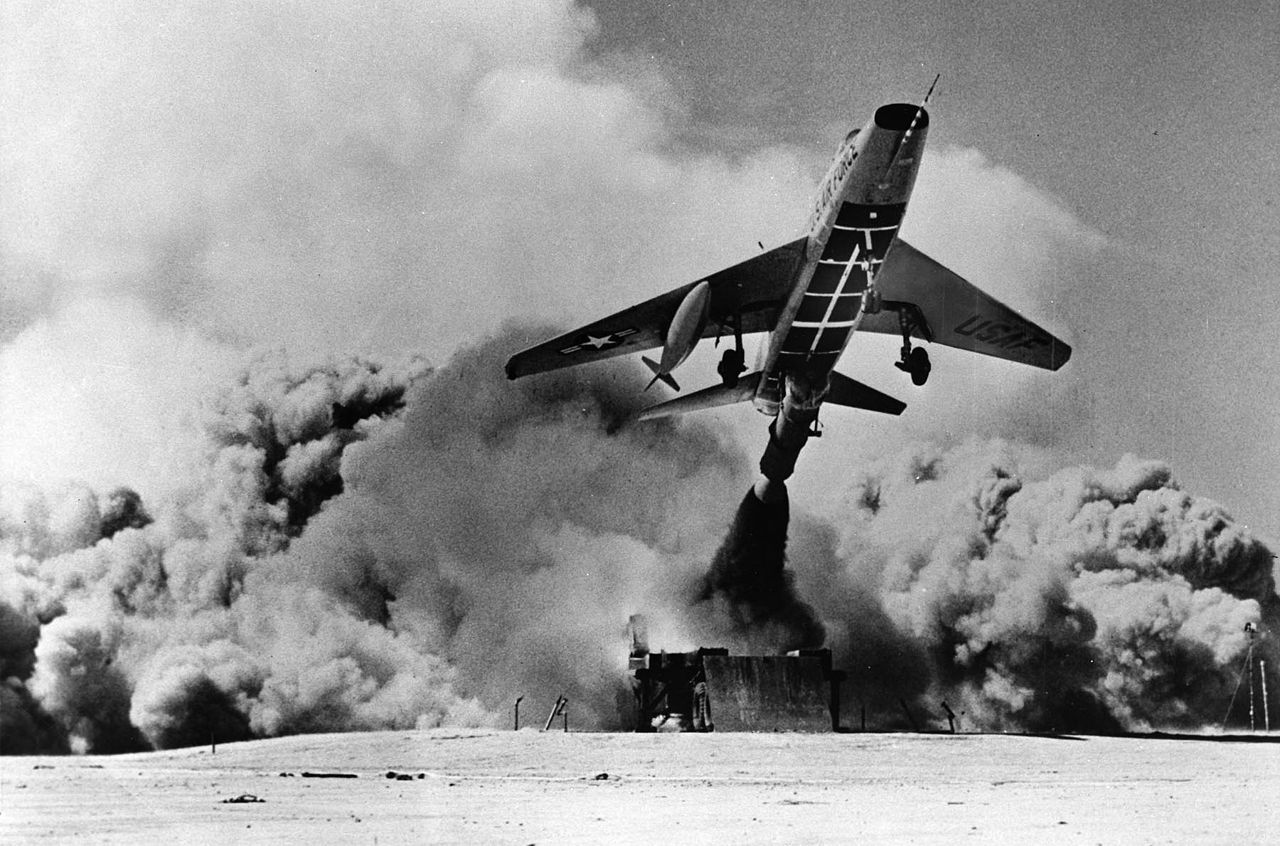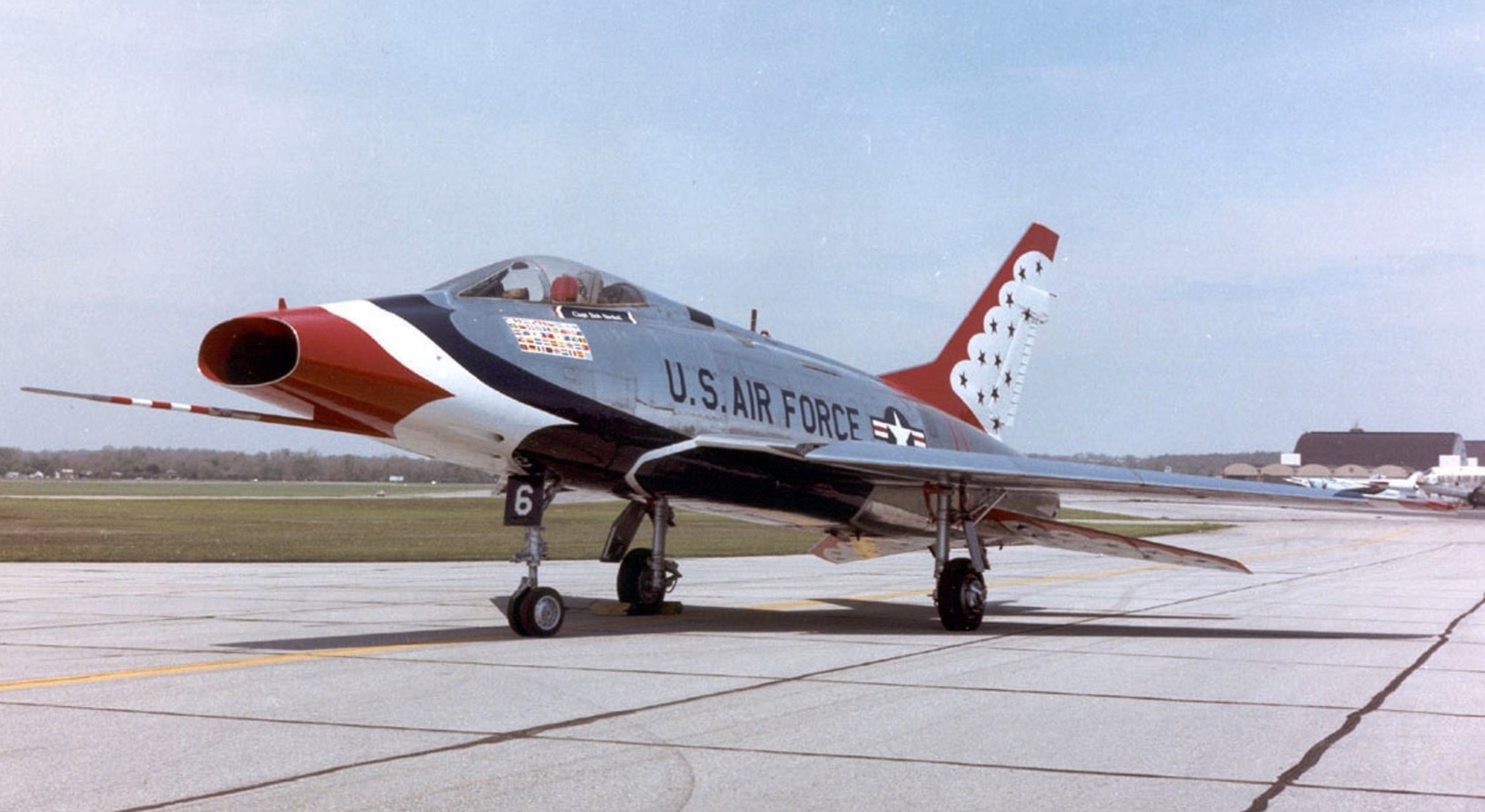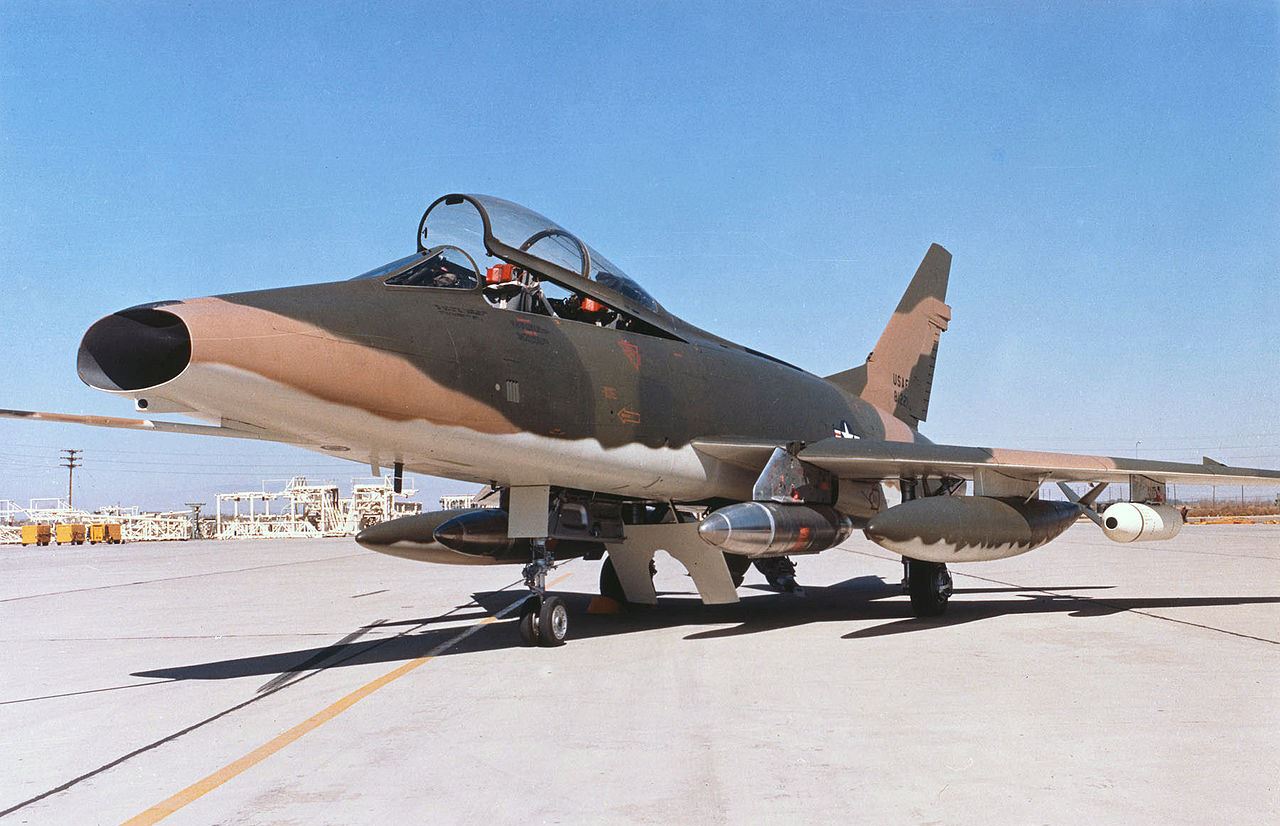The Go-To Jet During the Early Going in SEA
There were 242 F-100s lost in Southeast Asia, most of them to anti-aircraft fire. They were replaced in-country largely by the Republic F-105 Thunderchief and the McDonnell Douglas F-4 Phantom II. But having flown more than 360,000 sorties the Huns had more than earned their keep. After 1965, as other types took over their roles in missions over North Vietnam F-100s continued flying missions and logging combat hours as close air support (CAS) and ground attack aircraft south of the DMZ. F-100s finally rotated back to the world for good in July of 1971.
Improving the Breed

Making a Good Jet Even Better
As the F-100D continued in service and was found to be such a workhorse in Southeast Asia the jets underwent a service life extension program to more than double the design life of the airframe. Wings were fitted with external bracing strips. But F-100 losses in Vietnam once topped 50 aircraft in a single month. Overall Air Force losses totaled more than a dozen several times. Attrition dictated that at one time the current operational pace in Vietnam coupled with other operational losses the USAF would simply run out of F-100Ds. But the F-100D made a sterling name for itself in Southeast Asia nonetheless.

The ZeLL
One particularly impressive modification to the F-100D involved attaching an Astrodyne booster rocket, capable of 150,000 pounds of thrust, to the belly of an F-100D. When the rocket booster fired the Hun would be thrown into the air, after which the booster would be jettisoned and the jet free to accomplish its mission under “normal” circumstances. They tried it on 7 June 1957, and it worked, so they built it into later production airframes. This capability was called Zero Length Launch (ZeLL) and was tried with several tactical aircraft during the 1960s.

Memorable Thunderbirds Mount
The USAF Thunderbirds flew F-100C Super Sabres until they were replaced by Republic F-105 Thunderchiefs in 1964. After the Thud proved to be an unacceptable aircraft for the Team they reverted back to Super Sabres, albeit the F-100D. Another Air Force flight demonstration team, the Skyblazers, were formed in 1949 and were based in Europe, flying their F-100s exclusively overseas until just before the Thunderbirds performed in Europe for the first time in 1963. The Thunderbirds transitioned to the McDonnell Douglas F-4E Phantom II in 1969.
Still Improving the Breed

Keeping the Hun in the Game
As the F-100s soldiered on they were modified to improve their electronics, structures were strengthened, and ease of maintenance was improved. Wing fences appeared. Their afterburners were replaced with the simpler but more advanced afterburners from retired USAF Convair F-102 Delta Dagger interceptors which had been replaced by Convair’s F-106 Delta Dart. Compressor stall issues were finally (mostly) resolved when the afterburner modifications were made during the 1970s. Maintenance of the Delta Dagger afterburners was simpler as well.


[…] UH-1D and UH-1E IroquoisCessna O-1 Bird DogDouglas C-47 Skytrainde Havilland Canada C-7A CaribouNorth American F-100D Super SabreHelio U-10D Couriera Lockheed P-2 Neptune from VP-18 Flying PhantomsFairchild C-119 Flying […]
As a side note the only air to air kill of a B-52 was by a NM ANG F-100